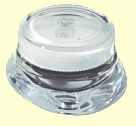| Home | Products | Articles | Doctors | Contact Us | My Shopping Cart | Checkout |
   |
|
Products - Eye & Lip Serum - Facial Youth Accelerator Serum - Anti-Aging Spot Serum - Body Gel Wash - Body Hydrator & Moisturizer - Sun Protection Body Crème - Sun Protection Facial Crème - Facial Reparative Enzyme Crème - Facial Cleanser - Hydrating Toner - Reparative Youth Serum - Scar Normalizer - Anti-Cellulite - Anti-Acne - Facial Youth Rejuvenation Spa - Photo Gallery Articles Books Doctors Contact Us |
Premature visible facial aging such as lines, wrinkles, leathery texture, sagging and uneven color is due to the overexposure to the sun. Tanning is your body's defense against the damaging UV rays. When you are burning, the rays have already penetrated the skin and it is no longer being protected. Sunlight is made up of three types of ultraviolet rays. These are the UVA, UVB, and UVC rays. The UVA and UVB rays can disrupt the skin's connective tissue, resulting in premature aging. UVA rays, the second strongest rays, are the long wavelength burning rays (320-400 N.M.) that penetrate through the skin's epidermis into the dermis. They also break down collagen and elastin, which are the connective tissues that keep skin firm and young. These UVA rays penetrate deeper into the skin's layer and are associated with skin cancer, premature aging, and the wrinkling of the skin. UVA rays maintain their intensity all day and all year long. UVB rays are the third strongest type of rays and occur between 10 a.m. and 3 p.m. in the afternoon. These midrange wavelength (290-320 N.M.) burning rays damage the epidermis and can cause premature cataracts. The UVB rays also disrupt circulation and blood flow which eventually leads to the clumps of darkened cells that cause age-spots on the skin. As well, the UVB rays increase the potential risk for multiple types of skin cancer. They are more intense during summer months, at higher altitudes, and in locations closer to the equator. UVB rays are the most common cause of sunburns, and they contribute to the premature aging of the skin. Long-term exposure to UVB rays during a person's lifetime will alter their immune system as well. UVC rays are the strongest and most dangerous. People are protected from these UVC rays by the protection of the ozone layer where rays are filtered. However, because of the continued depletion of the ozone layer, these rays pose a potential risk factor for future damage done to the skin. As a result of repeated exposure to the sun over a period of time, a person will develop precanceroud skin conditions know as Actinic Keratosis. If it is left untreated, with time they can develop into skin cancer. The three most common types of skin cancer are the Basal Cell Carcinoma (the most common ), the Squamous Cell Carcinoma, and finally the Melanoma. UV index scale:
|
|
|
|
